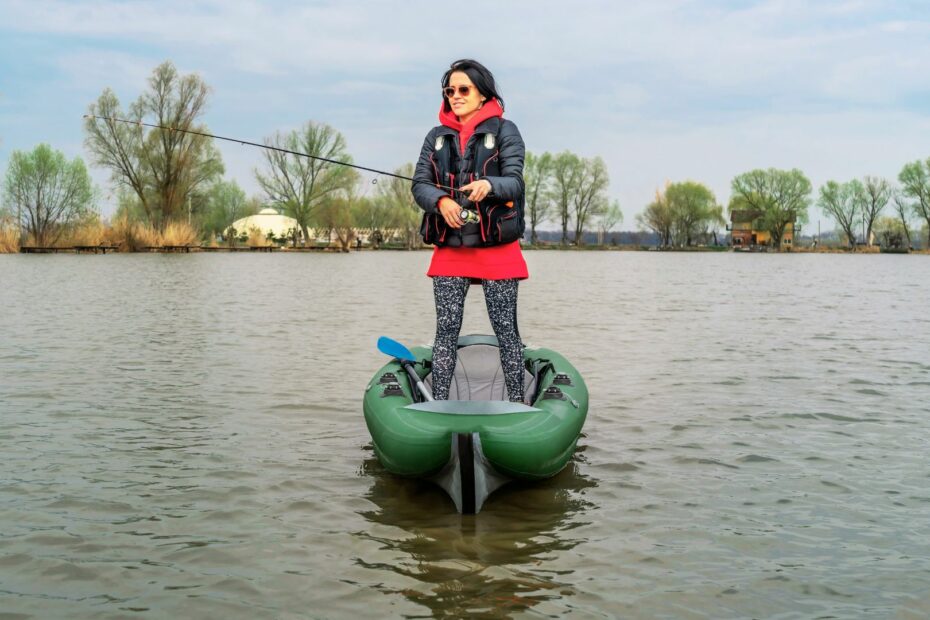Inflatable kayaks have surged in popularity among outdoor enthusiasts due to their convenience and accessibility. However, their safety is a common concern, particularly for those new to kayaking or considering an inflatable model for the first time. This article seeks to address the safety aspects of inflatable kayaks, examining their design, usability, and the precautions needed to ensure a safe kayaking experience.
Understanding Inflatable Kayak Safety
Design and Construction
- Material Quality: Modern inflatable kayaks are constructed with sturdy, puncture-resistant materials such as PVC or Hypalon, enhancing their durability and safety.
- Air Chambers: Multiple air chambers in these kayaks provide buoyancy redundancy. If one chamber is compromised, the others can keep the kayak afloat.
Stability and Performance
- Stability: Inflatable kayaks often have a wider base, making them more stable than some traditional hardshell kayaks, which is beneficial for beginners.
- Performance in Water: While inflatable kayaks handle differently than hardshells, many models perform admirably in various water conditions, including calm lakes, rivers, and even mild ocean waters.
Safety Tips for Inflatable Kayak Users
Proper Usage
- Understand Your Kayak: Familiarize yourself with the kayak’s capacity, and don’t overload it.
- Use in Appropriate Conditions: While some inflatable kayaks are suitable for rough waters, it’s crucial to use them within their design limits, primarily in calmer waters for recreational models.
Personal Safety Gear
- Life Jackets: Always wear a life jacket, regardless of your swimming abilities.
- Appropriate Clothing: Wear suitable clothing for the weather and water temperature.
Regular Inspection and Maintenance
- Check for Damage: Before each use, inspect the kayak for any signs of wear or damage.
- Proper Inflation: Ensure the kayak is inflated to the recommended levels, as both under-inflation and over-inflation can affect its performance and safety.
Environmental Awareness
- Weather and Water Conditions: Check the weather forecast and understand the water conditions of your kayaking area.
- Plan Your Route: Be aware of your route and stay close to the shore in unfamiliar or challenging waters.
Comparing Safety with Hardshell Kayaks
- While hardshell kayaks have their advantages in terms of speed and maneuverability, inflatable kayaks offer comparable safety features, especially in terms of stability and ease of rescue due to their buoyancy.
Emergency Preparedness
- Carry a repair kit for on-the-spot fixes.
- Have a plan for emergencies, including how to signal for help.
Conclusion
Inflatable kayaks, when used appropriately and with the necessary precautions, are a safe option for both novice and experienced kayakers. Their stability, buoyant design, and durability make them a viable choice for various kayaking adventures. As with any water activity, respecting the water, understanding your equipment, and adhering to safety practices are paramount for a secure and enjoyable experience.
FAQs Regarding the safety of inflatable kayaks
How safe are inflatable kayaks compared to traditional kayaks?
Answer: Inflatable kayaks are generally very safe and can be comparable to traditional kayaks in terms of stability and durability, especially when used in appropriate conditions and with proper maintenance.
Can inflatable kayaks be used in rough water?
Answer: While some inflatable kayaks are designed for rough waters, including whitewater, it’s crucial to use a model that is specifically designed for such conditions and to have the appropriate skill level.
Are inflatable kayaks prone to punctures?
Answer: Modern inflatable kayaks are made with durable, puncture-resistant materials. While punctures are possible, they are not a frequent occurrence with proper use and care.
What should I do if my inflatable kayak gets a puncture while on the water?
Answer: If a puncture occurs, the multiple air chamber design of most inflatable kayaks should allow you to safely get to shore. Always carry a repair kit for emergency on-the-spot repairs.
How do I ensure my inflatable kayak is safely inflated?
Answer: Inflate the kayak to the manufacturer’s recommended air pressure, which is usually indicated on the kayak. Avoid under-inflation or over-inflation as both can affect the kayak’s performance and safety.
Is it necessary to wear a life jacket when using an inflatable kayak?
Answer: Yes, it’s crucial to always wear a life jacket, regardless of your swimming ability or the type of kayak you are using, for safety.
Can inflatable kayaks handle ocean kayaking?
Answer: Some inflatable kayaks are designed for ocean use, but it’s important to choose a model suited for sea kayaking and to be aware of the weather and sea conditions.
How do I maintain my inflatable kayak to ensure its safety?
Regularly inspect your kayak for any damage or wear, clean it after use, store it properly, and ensure it’s dry before storage to prevent mold and material degradation.
What are the best conditions for using an inflatable kayak?
Answer: Inflatable kayaks are best used in the conditions they are designed for, which is typically calm to moderate waters, such as lakes, rivers, and coastal areas.
Are inflatable kayaks suitable for beginners?
Answer: Yes, inflatable kayaks are often a good choice for beginners due to their stability, ease of use, and portability.

